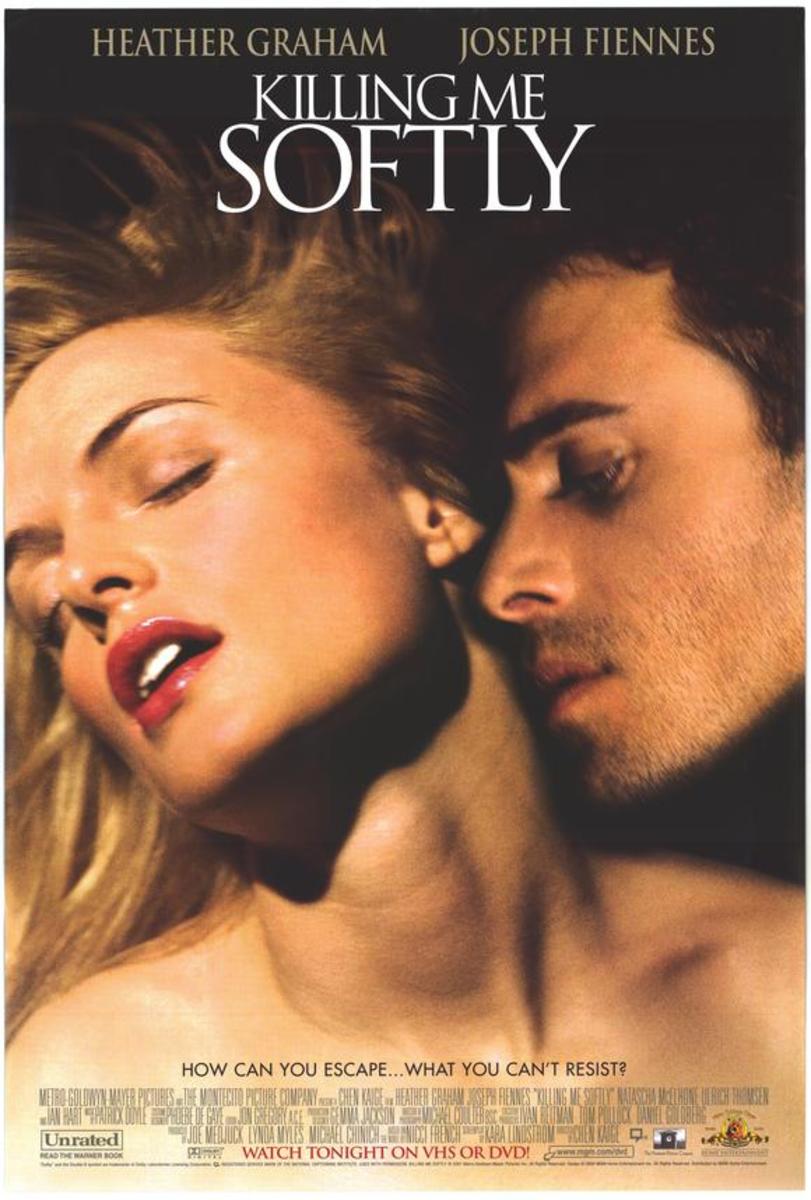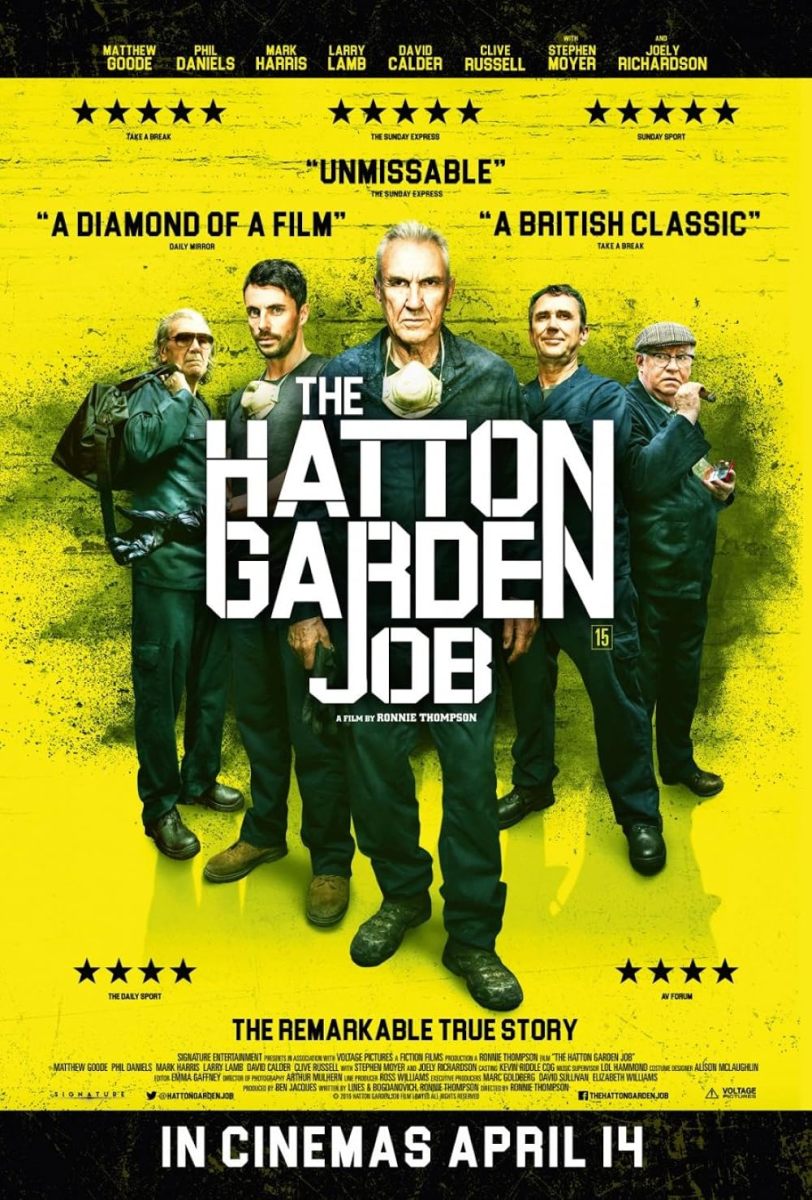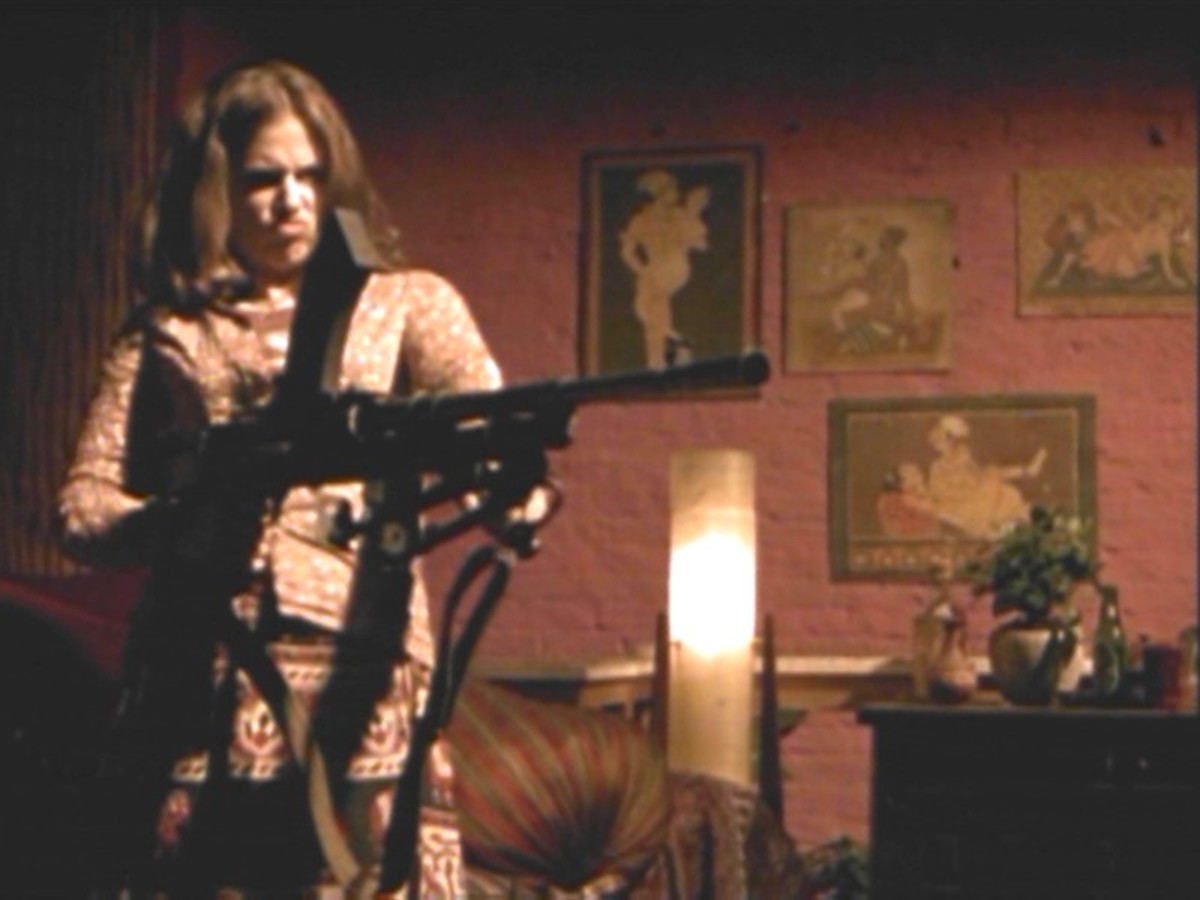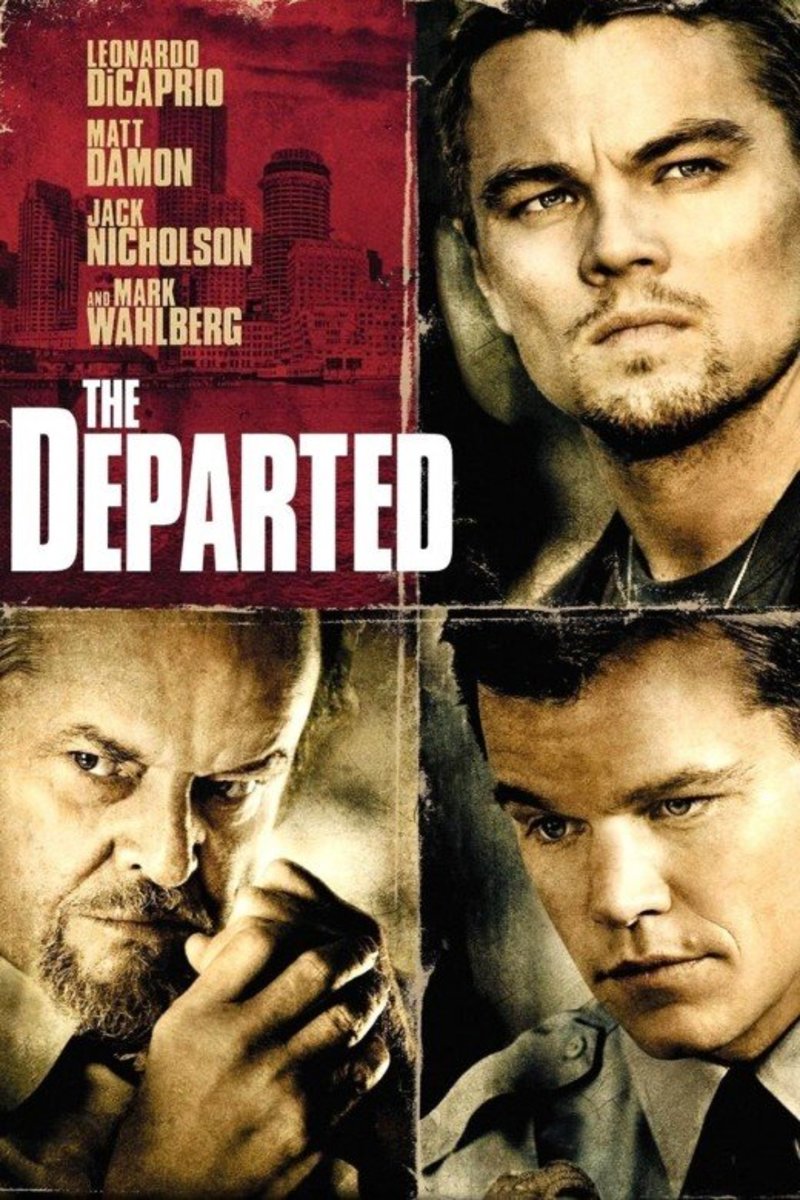Four Quick Movie Reviews
Five
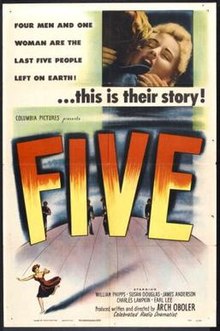
Preface
It seems that, once again, I have failed to find a suitable picture covering the width of the article, which is not for a lack of trying.
Today we're going to do a relatively fast rundown on four films: Five (1951); The Mad Magician (1954); The Man Who Turned to Stone (1957); and The Terror of the Tongs (1961).
Now, one could call these "crime" films, if we allow a more expansive scope for the term --- which I think we will do to keep things simple. And my readers know how I like to keep things simple!
Even the first film up, Five --- though it is technically a "post apocalyptic" ... blah, blah, blah, etc., etc., so on and so forth --- does have its very clear, straightforward "crime" element.
I should tell you that I bought this DVD, with all four movies on it, from a local Dollar General store, having retrieved it from the discount bin. I paid $1.95 for it.
I'm going to tell you right now, if you can find this DVD anywhere, pick it up and give it a chance.
Now, its interesting to note the running times: Five: approximately 93 minutes; The Mad Magician: approximately 72 minutes; approximately 71 minutes; The Terror of the Tongs: approximately 76 minutes.
I think that we, today, consider an hour and a half (Five) to be a decent amount of time to unfold a fairly substantial story. However, one might be taken aback with the other three running times of just over an hour and ten minutes. But I would caution you to reserve judgment.
You see, one thing I am learning, again and again, is that filmmakers of the fifties, sixties, seventies, and even eighties knew how to pack a lot of story into what we, today, would call unreasonably short windows of time.
Five
Its the end of the world. Atomic war has happened and wiped out all of humanity. There are only five survivors (which means that the entire cast for the film was five).
The survivors:
- An embittered (his state of mind pre-global devastation) recluse, who wants only to be left alone.
- A pregnant woman, desperate to find out what has become of her husband, "Steve."
- An elderly, philosophically-minded banker, who seems to be under the delusion that he is touring the country, by jeep, on holiday.
- A black man, who is the driving companion of the delusional banker; his self-appointed guardian and caretaker. As for himself, his goal seems to "keep on keeping on" as best he can.
- An explorer with Nazi-like inclinations.
Now then, it is the fifth survivor, the neo-Nazi explorer, who provides the crucial tension for the story. He seems to believe that the reason that they survived was because they shared a "special immunity" to the radiation. If they have this immunity, he reasons, then there must be others with this immunity... somewhere.
He wishes to gather them together "in one place." Presumably, he wanted to restart civilization over again, this time with himself at its head.
I will not recite the plot because you can get a deeper plot synopsis anywhere. I will simply share two thoughts I had at the conclusion of the film.
Thought #1:
I thought to myself something like: "Hmm. That was a nice, little movie." Even now, if it were rounded out to two hours, I could see it as a very respectable television movie.
I could even, perhaps, see it as spawning a television series. You know what the gimmick would be?
Five. Always five.
One dies off or abandons or is driven off from the group, for some reason, and another survivor is discovered to replace him.
Thought #2:
I don't know if this is right or wrong, but it doesn't matter. I can imagine a young Stephen King watching this on television, and having the seed of an idea planted deep in his mind --- for the book that I still consider to be his magnum opus, The Stand.
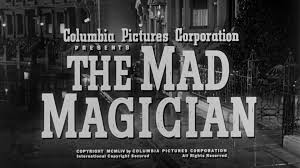
The Mad Magician
The Mad Magician stars Vincent Price as the titular "mad magician."
In this one, Mr. Price plays a magic trick engineer, or magic show gadget maker. Or another way to put it would be to say that his relationship to stage show magicians, "masters of illusion," is that of Q to James Bond (the Sean Connery, Roger Moore, Pierce Brosnan Bonds).
Q makes the stuff that makes it possible for Bond to be Bond (special cars, sonic boom shoe heels, laser pens, etc.).
For a magician like, say, "The Great Callisto," or somebody, Mr. Price would make his devices of illusion.
One day "Gallico the Great" (Vincent Price) gets the urge to capture some of the spotlight for himself and perform. He devises a show which features a special trick of his own creation, real "showstopper" stuff.
His boss stops the show with an injunction. You see, the fine print of Gallico's employment contract makes it clear that anything magic-related that he creates, on duty or off, belongs to the company, belongs exclusively to his employer.
This film rather reminds me of another Vincent Price starring vehicle: Theater of Blood (1973), which I highly recommend, though it may not be for everybody.
What both films have in common is that they concern proud performers, who feel thwarted in the expression of their art, and take homicidal revenge against their self-perceived tormentors.
At any rate, the boss gives Gallico's showstopper trick to another, stage magician in the company.
Gallico's sense of rage and betrayal (Gallico's wife also left him for his wealthy employer), leads the magic shop Q to first kill his boss, then his ex-wife, then the other magician, and so forth.
Final verdict:
This film, like the other three in this collection, is tightly focused, it knows what it is. It gets to where it needs to get to; and does what it needs to do. Gallico's motivation is to become a great on-stage, performing magician. However, after his first murder, his only goal becomes survival and avoiding detection.
Another character is a young, brilliant, police officer, all gung-ho to prove the efficacy of the new fingerprint science.
The other character that concerns us is a woman. She is a mystery novelist, benevolent dictator to a henpecked husband, and co-owner/operator of a boarding house.
Her desire to assist the forces of justice come from equal parts: a "busybody" nature; a sincere sense of civic duty; the desire for thrilling adventure; and a deceptively keen intellect.
The motivations and drives of the young police officer and the busybody are more than enough to ensnare "The Mad Magician."

The Man Who Turned to Stone
Another characteristic that these films have in common is that they are well-titled. The titles are actually representatives of what happens in the films as a whole, which is more than can be said for a 2008 release, starring Seth Rogen and James Franco, called "Pineapple Express."
I'll just mention that a characteristic that this movie, The Man Who Turned to Stone and The Terror of the Tongs share, is that when the time came, the villains met their ends with an admirable, quiet dignity.
There was no flailing about. They went out like true gangsters, true "playas." In other words, they went out in a manner that I call being "true to the game." And that's a whole lot more than can be said of the Black Manta in the Aquaman movie.
Remember that scene in which he and his father attacked that submarine, mercilessly slaughtered the crew, and then encountered Aquaman?
Remember when Manta's father got trapped beneath some heavy apparatus that was crushing him?
Remember how the Manta turned all soft, like a five-year-old school girl, begging Arthur for assistance?
Please, Aquaman. Save my daddy! Save my daddy! Save my daddy, mighty Aquaman!
As I mentioned in my review of that film, that display, by a character of the stature of Black Manta (Arthur's chief nemesis in the comics; and the guy that managed to cut off Aquaman's hand), made me want to vomit.
Now I know what you're thinking: Perhaps the equanimity with which the villains faced their end, in those films, was largely a function of their relatively brief running times.
I would have to disagree with that. These villains, as characters, are two well-drawn. They have integrity, by which I mean behavioral consistency.
They have the same kind of behavioral consistency that Kevin Costner's Pa Kent showed in Man of Steel, as he was always cautioning Clark about using his powers, when he was young, because "there are parts of yourself you're gonna have to keep secret" for now --- and was "true to the game" even when it came to his own life.
He didn't allow his son, Clark, to save him from the twister. He halted him with a gesture, a gesture that said, without words: No, Clark! Its alright son. Take care of your mother. I dare anyone who watched that movie, to tell me that wasn't a scene of heartbreaking beauty.
Anyway, what happens in this movie: The Man Who Turned to Stone?
Well, the movie certainly delivers on its title. It seems that there was a group of scientists who have been alive for a couple of centuries, yet not one of them look to be a day over 45, or so.
Their longevity began with an experiment. The experiment began with a question: The cells of the human body divide and regenerate themselves constantly. Why do they not do so indefinitely?
Eventually, they stumble onto the fact that longevity, at least for a couple of centuries, or so, can be obtained by draining the "life-force" from one person, thus killing that person, and transferring it to oneself, which greatly increases the regeneration cycle of the human cellular structure, thus greatly increasing the persistence of the human body into whom this life-force has been transferred.
In the twentieth-century, the group transferred their activities to a women's prison. They believe that this is the perfect venue to continue their "experiment." They believe that they can discretely kill off women prisoners, siphoning off their "life-forces" to sustain their unnaturally long lives.
Now, as I said, the villainous doctors need periodic "life-force" recharges, as it were, of course. The period just before they get their required recharge, their skin turns very stiff, quite oddly immune to puncture, hard as stone, you might say.
I'm not going to give a blow-by-blow of the plot. Suffice it to say that this film is very good for what it is.
If I were watching this film in 1957, while keeping in mind all of the parameters within which it operates, I would give this film a very respectable 7 out of 10.

The Terror of the Tongs
This is the one film in this quartet that might give some people pause.
You have, of course, a "white" actor, Christopher Lee, playing a Chinese man. I would say there was at least one other white actor playing at being Chinese. In addition to that you have actual Chinese, or Asian, actors giving a rather "shuckin' and jivin'" portrayal of non-white people, as was not unheard of for the time period.
However, I did not think that Mr. Lee put any ethnic bias in his performance of the Chinese underworld boss. In other words, I do not think that he was doing Chinese caricature. He gave a wonderfully campy sinister, over-the-top performance of the film's villain. This is a villain that would not have been out of place in any Sean Connery/Roger Moore James Bond movie.
Christopher Lee's performance never rang false for me. It feels like he had given himself, body and soul, to the role. He is easily, far and away, the best thing on the screen.
Now, I could give a plot summary, but then again, I can't really be bothered!
Just know these core ideas:
- The performance of Christopher Lee is everything holding this movie together --- and I mean everything!
- If I were watching this film in 1961, the year of its initial theatrical release, I would give it a 6.5 out of 10.
- That means that I enjoyed it well enough for what it is.
- If Vincent Price was the Bruce Willis of his day, within the pulp horror-thriller genre of film acting, the Christopher Lee was the Samuel L. Jackson of his day, in the same milieu of film acting.
- I make this comparison because like Willis, Mr. Price seemed to play the same character (albeit brilliantly), more or less, from film to film to film, relying, or made to rely on on-screen, celebrity, face recognition, and established general screen persona. Mr. Lee, like Samuel L. Jackson, tended to play more roles into which he submerged himself facially and vocally; in other words, the latter two actors put together a more extensive "character actor" profile than the former two thespians.
- Though I enjoyed this film, for what it is, I can see why it might give others pause.
Thank you for reading!





